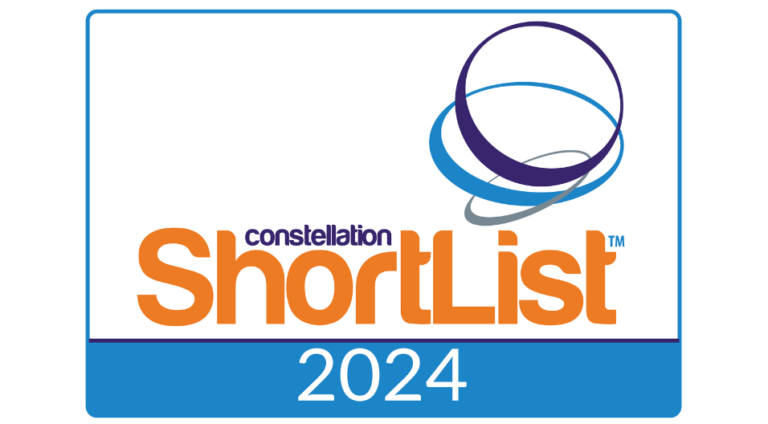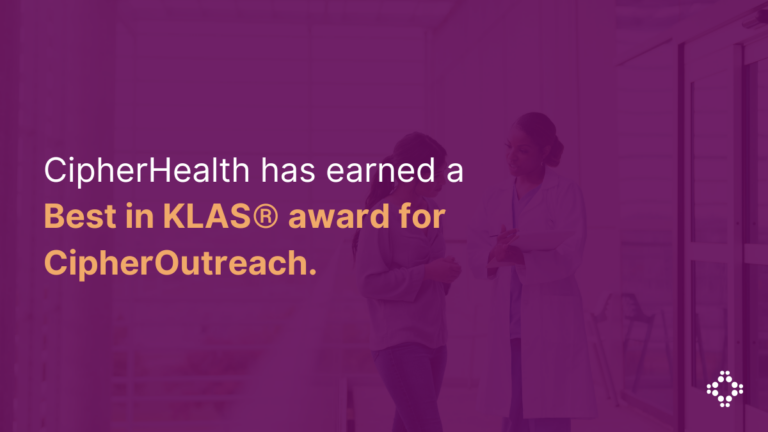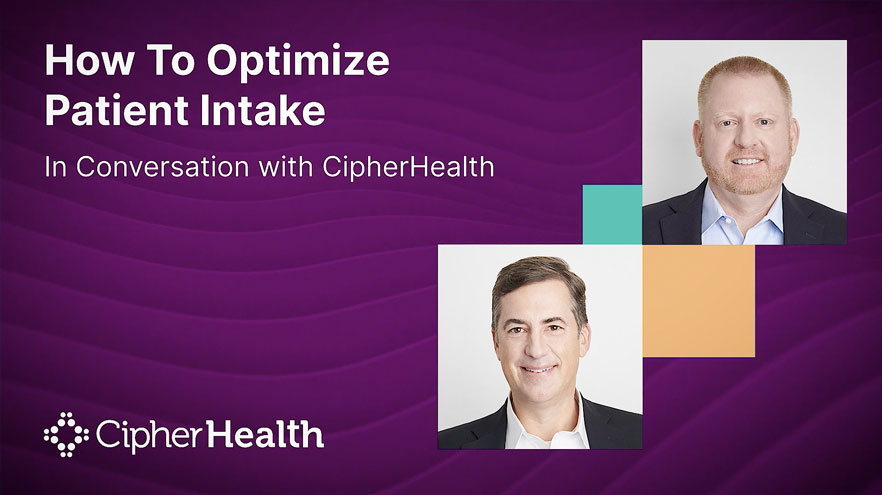How to Optimize Patient Intake
Learn about the unique ways you can make your patients feel special every time they access care. CipherHealth CEO Jake Pyles shares why CipherHealth created CipherConnect and how information we gather during intake can be leveraged downstream to improve other parts of the care continuum. Jake also talks about the need to stop requiring patients to reintroduce themselves every time they enter a health system. Watch now.
Modernizing the Patient Intake Process
Interviewer: Well you mentioned patient intake, and that’s an area with Covid of course there was a lot of fear and uncertainty about going in and seeing your physician, going into a setting. How is patient intake and how is that process being optimized and improved given the current situation that we’re all in.
CEO Jake Pyles: The constant process of entering into a care setting and a set of forms over and over and over, I think we all know is an antiquated approach and those days should be numbered. So what we’re working on is a conversational chat bot that facilitates interacting with the patient digitally to take them through that intake process, and I think that we’re going to be able to use that in ways to understand unique aspects about the patient’s needs. Ask social determinants of health questions, do you have transportation, do you have food and security. As we gain more understanding in that part of the workflow through intake, we can leverage that downstream to other parts of the care continuum. For example, we know a patient doesn’t have transportation, why not reach out to them pre-appointment, facilitate an Uber or Lyft pick up to get them to their appointment on time. The thing that I tell people that I think frustrates all of us in the way we interact with the healthcare system is that every time we enter into a care setting, we are re-introducing ourselves to the system and I’ve had a lot of conversations with C-suite execs that are beginning to understand this problem, this challenge, and knowing that they’re not appearing as an integrated healthcare provider. I think the healthcare systems also have to recognize that one of their key assets, their strength, is their footprint, their real estate footprint that they have in a given market, taking advantage of that so when you enter into a hospital one day and two weeks later you enter into an ambulatory clinic for a follow up, whatever information that is gained in the hospital, why is that not leveraged in the next appointment? There are unique things that we could understand about the patient, make them feel special, make them know that we know who they are, what they want from us, that we have to begin to stitch this together to make it appear that we know who they are and that we’re not forcing them to reintroduce themselves every time they come into one of our facilities.





